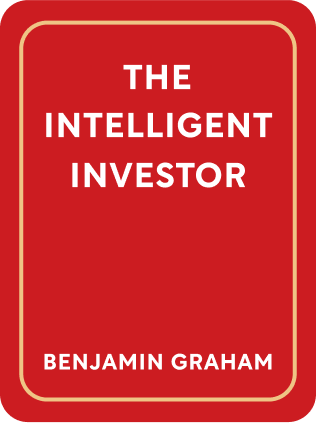

This article is an excerpt from the Shortform book guide to "The Intelligent Investor" by Benjamin Graham. Shortform has the world's best summaries and analyses of books you should be reading.
Like this article? Sign up for a free trial here .
What’s a security analysis? How does Benjamin Graham explain the stock analysis process?
A security analysis according to Benjamin Graham is the process of evaluating and examining stocks. In a security analysis, Benjamin Graham explains that you’ll look at the stock price, company history, and more.
Read more about security analysis, Benjamin Graham, and his theories.
Security Analysis: Benjamin Graham’s Method
The chief question when buying stocks is whether the stock’s current price is too high or too low relative to its underlying value.
The current price is easy to determine since it’s quoted as market prices on stock tickers. The stock’s underlying value is more difficult, since it involves predicting how the company will perform in the future.
A security analysis, says Benjamin Graham doesn’t give precise formulas for calculating company value (that’s more complex and out of the scope of this book), he discusses the general factors that determine a company’s value. This should be sufficient for nonprofessional investors to understand what professional analysts are saying.
Valuing Companies in General
The traditional way to calculate a company’s value is to estimate its earnings over a range of years in the future, then to multiply that by a “capitalization rate.” The capitalization rate depends on the company’s stability and future performance; the better a company will do, the higher the capitalization rate.
For example, after security analysis, Benjamin Graham says you may decide that a company with earnings per share of $5 deserves a capitalization rate of 10, implying a stock value of $50. However, this rate is subjective; another investor may decide it deserves a rate of 20, implying a stock value of $100.
Another measure of stock value that is more common today is price-to-earnings ratio (P/E ratio), which is the current stock price divided by the company’s current earnings per share. A stock with a higher P/E multiple implies a faster earnings growth rate than a stock with a lower multiple.
In general, Graham suggests a few major factors that affect the capitalization rate:
- Future long-term prospects
- Management
- Financial strength
- Dividend record and rate
Future Long-term Prospects
How well will the company do in the future? Is it growing or shrinking? Will it be a market leader or a minor player?
Graham doesn’t provide more specifics on evaluating this, but in his commentary Zweig adds a few factors:
- Competitive advantage or “moat”: The company has a strong position that will endure over time. These include strong brand loyalty, monopoly status, or economies of scale. (Shortform note: For more on competitive advantage, see our summary of Understanding Michael Porter.)
- Consistent historical growth: The company should have grown revenues and earnings steadily over the past 10 years. Be skeptical of a company that promises 20% growth without a track record of such growth.
- Research and development budget: A reasonable amount or R&D suggests the company will retain its competitive edge and introduce new product lines instead of becoming obsolete. The average budget is different depending on industry (consumer packaged goods companies may spend 5-10% while technology companies may spend more).
- Real growth: The company doesn’t grow merely on the backs of debt. On their cash flow statement, look out for “cash from financing activities”—this is cash flow from raising money and shouldn’t be confused with real sales growth.
- Lack of customer concentration: A company relying solely on a single customer is in a very precarious position.
During security analysis, Benjamin Graham also cautions that it’s easier for smaller companies to grow fast, and it gets harder to grow as the company gets larger. Thus, a company that started with just $100 million in revenue might have grown 40% each year for the past 3 years, causing market enthusiasm for boundless growth and a high P/E multiple. However, the company might find that once it reaches, say, $250 million in revenue, it starts stagnating, and its early investors that bought in at a high multiple may be disappointed as the stock price drops.
Management
How capable is the management team? Will they lead the company to success or ruin?
While financial analysts often include management as an explicit factor, Graham believes management capability is already reflected in the company’s track record and future prospects, so including it again is “double counting” and leads to overvaluations.
However, he notes that sudden changes in management have yet to play out and might thus not show up in the track record. Changes in management can be both positive and negative. For instance, in 1921, Walter Chrysler took over a dying Maxwell Motors and revitalized it into an automobile powerhouse.
In his commentary, Zweig adds a few other warnings signs of bad management:
- High executive pay: Management may be running a company to benefit themselves and not shareholders.
- Repricing stock options: When companies cancel existing stock options (that are often “out of the money” and worthless) to issue more options to employees at better prices, it suggests a lack of responsibility and refusal to accept consequences.
- Repeated insider sales: Management that repeatedly sells big parcels of stock have less incentive alignment with you as a shareholder.
- More talk than action: Management should spend time managing the company privately, not on managing relations with Wall Street and press.
- Distorted accounting: Opaque financial reports may suggest management is hiding something.
- Buying back shares at high prices: This suggests management is propping up stock prices using cash (thus benefiting the value of their own stock prices), when that cash would be better paid as dividends.
Financial Strength
A company with a large stockpile of cash and little debt is in a better position than one with little cash and significant debt. If these two companies with the same earnings and the same stock price, the first is clearly a better buy than the second.
Graham recommends an assets to liabilities ratio of 2:1 or better.
In his commentary, Zweig adds:
- On the balance sheet, long-term debt should be under 50% of total capital.
- Calculate “owner earnings,” or what a 100% owner would take home in cash each year. This is calculated by net income plus amortization and depreciation minus capital expenditures. Owner earnings more sensibly relates company profits than the reported net income, which can be subject to accounting manipulation. (Warren Buffett popularized this metric.)
Beware of companies that are growing revenue quickly but showing increasing losses and a precarious financial position.
- A dotcom company, Exodus Communications, had a market capitalization of $14 billion in 1999, with just $242 million in revenue. Compare this to a “boring” industrial company, Emerson Electric, which had a market capitalization of $25 billion for $14 billion in revenues. While Exodus had grown revenue by nearly 400% that year, it had doubled losses to $130 million and had $2.6 billion in debt. In 2001, Exodus filed for bankruptcy.
Dividends
A security analysis, Benjamin Graham claims, should also consider dividends. A company with a long history of paying substantial dividends (over the past 20 years or more) is a positive sign for stock quality.
In Graham’s day, it was standard for companies to distribute around 55% of its dividends. However, since then dividend payouts have dropped significantly to 30-40%, because of beliefs that reinvesting in the company was better than paying dividends. We’ll return to dividends when discussing company management in Chapter 19.

———End of Preview———
Like what you just read? Read the rest of the world's best book summary and analysis of Benjamin Graham's "The Intelligent Investor" at Shortform .
Here's what you'll find in our full The Intelligent Investor summary :
- Key advice from what Warren Buffett considers the "best book about investing"
- The 2 major indicators you should use for evaluating stocks
- How you can use aggressive or defensive investing strategies






